UK house prices increased by 12.8% in the year to May 2022, up from 11.9% in April 2022.
On a non-seasonally adjusted basis, average house prices in the UK increased by 1.2% between April and May 2022, up from an increase of 0.4% during the same period a year earlier (April and May 2021).
The UK Property Transactions Statistics showed that in May 2022, on a seasonally adjusted basis, the estimated number of transactions of residential properties with a value of £40,000 or greater was 109,210.
This is 5.1% lower than a year ago (May 2021). Between April and May 2022, UK transactions increased by 1.3% on a seasonally adjusted basis.
House price growth was strongest in the South West where prices increased by 16.9% in the year to May 2022. The lowest annual growth was in London, where prices increased by 8.2% in the year to May 2022.
England house prices grew by 13.1% in the year to May 2022, up from 11.6% in April 2022.
England house prices were growing faster than the UK annual rate of 12.8% in the year to May 2022.
The South West was the fastest growing region with annual growth of 16.9% in the year to May 2022.
The lowest annual growth was in London, where prices increased by 8.2% over the year to May 2022.
England
In England the May data shows, on average, house prices have risen by 1.3% since April 2022.
The annual price 13.1% takes the average property value to £302,278.
The regional data for England indicates that:
- the South West experienced the greatest increase in its average property value over the last 12 months with a movement of 16.9%
- London saw the lowest annual price growth with an increase of 8.2%
- the North West saw the most significant monthly price fall with a movement of -0.2% since April 2022
- the East of England experienced the greatest monthly growth with an increase of 2.6% since April 2022
Price change by region for England
| Region | Average price May 2022 | Annual change % since May 2021 | Monthly change % since April 2022 |
|---|---|---|---|
| East Midlands | £244,060 | 15.2 | 1.9 |
| East of England | £353,574 | 14.8 | 2.6 |
| London | £526,183 | 8.2 | 0.2 |
| North East | £153,592 | 9.7 | -0.1 |
| North West | £205,783 | 11.5 | -0.2 |
| South East | £388,531 | 13.5 | 1.4 |
| South West | £323,418 | 16.9 | 1.0 |
| West Midlands | £247,162 | 14.0 | 2.2 |
| Yorkshire and the Humber | £204,835 | 12.6 | 2.1 |
Repossession sales by volume for England
The lowest number of repossession sales in March 2022 was in the East of England and West Midlands region.
The highest number of repossession sales in March 2022 was in the North West.
| Repossession sales | March 2022 |
|---|---|
| East Midlands | 2 |
| East of England | 1 |
| London | 6 |
| North East | 10 |
| North West | 11 |
| South East | 7 |
| South West | 2 |
| West Midlands | 1 |
| Yorkshire and the Humber | 6 |
| England | 46 |
Average price by property type for England
| Property type | May 2022 | May 2021 | Difference % |
|---|---|---|---|
| Detached | £474,802 | £411,963 | 15.3 |
| Semi-detached | £288,881 | £253,768 | 13.8 |
| Terraced | £247,961 | £219,133 | 13.2 |
| Flat/maisonette | £248,105 | £229,010 | 8.3 |
| All | £302,278 | £267,295 | 13.1 |
Funding and buyer status for England
| Transaction type | Average price May 2022 | Annual price change % since May 2021 | Monthly price change since April 2022 |
|---|---|---|---|
| Cash | £283,166 | 12.8 | 1.2 |
| Mortgage | £311,806 | 13.2 | 1.3 |
| First-time buyer | £251,183 | 12.6 | 1.4 |
| Former owner occupier | £346,356 | 13.6 | 1.2 |
Building status for England
| Building status | Average price May 2022 | Annual price change % since May 2021 | Monthly price change % since April 2022 |
|---|---|---|---|
| New build | £434,515 | 27.8 | 5.4 |
| Existing resold property | £288,329 | 8.4 | 0.4 |
London
London shows, on average, house prices have risen by 0.2% since April 2022.
An annual price rise of 8.2% takes the average property value to £526,183.
Average price by property type for London
| Property type | May 2022 | May 2021 | Difference % |
|---|---|---|---|
| Detached | £1,082,097 | £973,866 | 11.1 |
| Semi-detached | £688,058 | £619,856 | 11 |
| Terraced | £579,590 | £525,642 | 10.3 |
| Flat/maisonette | £433,071 | £410,330 | 5.5 |
| All | £526,183 | £486,387 | 8.2 |
Funding and buyer status for London
| Transaction type | Average price May 2022 | Annual price change % since May 2021 | Monthly price change % since April 2022 |
|---|---|---|---|
| Cash | £536,015 | 6.8 | -1.5 |
| Mortgage | £521,706 | 8.5 | 0.5 |
| First-time buyer | £453,778 | 7.7 | 0.4 |
| Former owner occupier | £605,271 | 8.8 | 0.0 |
Building status for London
| Building status | Average price May 2022 | Annual price change % since May 2022 | Monthly price change % since May 2021 |
|---|---|---|---|
| New build | £614,010 | 18.7 | 4.0 |
| Existing resold property | £518,972 | 4.0 | -0.2 |
Wales
Wales shows, on average, house prices have risen by 0.9% since April 2022.
An annual price rise of 14.4% takes the average property value to £212,414.
There was 1 repossession sale for Wales in March 2022.
Average price by property type for Wales
| Property type | May 2022 | May 2021 | Difference % |
|---|---|---|---|
| Detached | £324,485 | £281,178 | 15.4 |
| Semi-detached | £205,508 | £179,663 | 14.4 |
| Terraced | £166,270 | £145,038 | 14.6 |
| Flat/maisonette | £135,803 | £123,659 | 9.8 |
| All | £212,414 | £185,654 | 14.4 |
Funding and buyer status for Wales
| Transaction type | Average price May 2022 | Annual price change % since May 2021 | Monthly price change % since April 2022 |
|---|---|---|---|
| Cash | £205,733 | 14.2 | 0.5 |
| Mortgage | £216,337 | 14.5 | 1.1 |
| First-time buyer | £182,992 | 14.2 | 1.1 |
| Former owner occupier | £247,011 | 14.7 | 0.6 |
Building status for Wales
| Building status | Average price May 2022 | Annual price change % since May 2021 | Monthly price change % since April 2022 |
|---|---|---|---|
| New build | £331,159 | 34.2 | 6.3 |
| Existing resold property | £201,633 | 11.3 | 0.8 |
Mark Harris, chief executive of mortgage broker SPF Private Clients, comments:
“As house prices continue to rise, inflation soars to 9.4 per cent and with more interest rate hikes on the way, there is growing concern around affordability and borrowing potential.
Mortgage rates remain competitive although they are on the rise.
Borrowers need to move quickly to secure the best fixed rates as they are often pulled at short notice.
With service levels varying considerably between lenders, it may take longer than borrowers anticipate, particularly if their case is complex so advice is more important than ever.”
Jeremy Leaf, north London estate agent and a former RICS residential chairman, comments:
“This most comprehensive of all house price surveys, though a little dated, offers a reliable snapshot of housing market activity.
As we are finding at the sharp end, prices are continuing their upward path, despite the impact of 40-year high inflation and five successive interest rate rises.
However, the continuing lack of choice, combined with a desire to take advantage of mortgage offers at super-low rates before they expire, have given the market added impetus.”
Richard Eagling, personal finance expert at NerdWallet, said:
“A cooling off period for the property market still seems to be in the offing, and it is always important to note that the ONS house price index tracks a couple of months behind others, so it was unlikely that today’s data would show any slowdown in price growth just yet.
Many prospective homebuyers will be watching prices with great interest, deciding when the right time is to act.
As with any financial commitment, it is imperative that individuals first evaluate all facets of their financial situation, including their personal savings, credit ratings, outstanding debts, and income.
Once this is completed, they can adjust their budget and factor in higher costs – and potentially reassess their home search.
Additionally, would-be homebuyers must carefully evaluate any mortgage offers, and research the best deals available in terms of rates and loan-to-value options.
Making use of online tools such as comparison sites can be helpful here, as it can speed up the process.
It remains to be seen whether the dual challenge of rising interest rates and inflation will cause house prices to stabilise or deflate a little after a two-year period of remarkable growth.
But byers who do their research and preparation now will put themselves in the best position to act when the time is right for them.”
Paresh Raja, CEO of Market Financial Solutions, said:
“Political and economic uncertainty invariably fuels speculation that the property market will suffer, but we should be wary of predicting any radical shifts.
Rising inflation and interest rates, coupled with political jousting within the Conservative Party, are clearly all factors that will affect the actions of many buyers and sellers across the market.
But other factors are at play.
The perennial undersupply of property plays a critical role in keeping prices high, and this is an issue that will take many, many years to tackle.
Moreover, we have seen throughout the pandemic that despite a great deal of uncertainty, house prices have risen.
This is because many homebuyers and investors often seek out the security of bricks and mortar as an asset to own – a reflection of the long-term trend of property prices rising and rising.
That is why we should not be too quick to predict a fall, but instead stay alert to the challenges at hand and focus on make informed, diligent decisions before any property investment.”
Anna Clare Harper, director of real estate technology platform IMMO, says:
“House prices are seen as a reflection of confidence. From that perspective, the latest house price data seems like a good thing.
However, that’s not the full story. Consumer confidence is down, and for good reason: we are not yet through the global health challenge of Covid, international war and political turmoil – first Brexit, now leadership uncertainty.
House prices are still booming due to shortages of supply.
We have an acute shortage of properties for sale and for rent which are affordable, in places people want and need to live, of good quality.
The only way to resolve this is to encourage long-term, professional investors into the sector, to rectify the shortage of supply and resolve this backlog.”
Tomer Aboody, director of property lender MT Finance, says:
“With such low numbers of properties coming to the market, it’s not surprising prices continue to rise as buyers compete for limited stock.
With interest rates rising, along with inflation and house prices, first-time buyers and movers are facing even tougher conditions with the market running away from them.
Getting more properties onto the market is key.
A restructure of stamp duty might encourage potential sellers to enter the market knowing that the cost of moving, whether upsizing or downsizing, is lower, and therefore more affordable.”




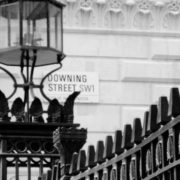
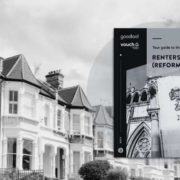


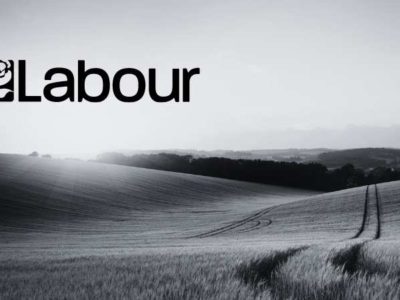
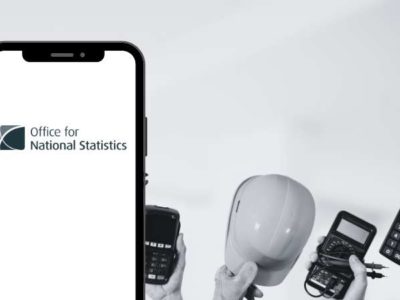
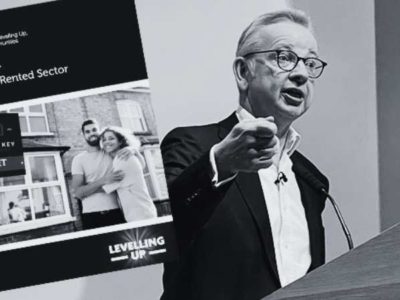



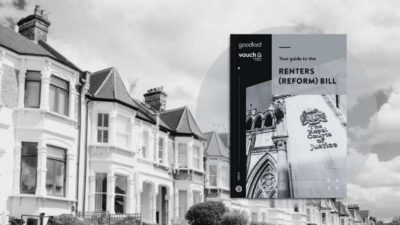






Comments